Media | Articles
Before Its Fallout Cameo, This Midcentury Concept Car Hit 150 MPH and Survived a 15-Year War
“War. War never changes.” So runs the tagline of the new Fallout series currently running on Amazon, a live-action reimagining of a video game set in post-apocalyptic America. But don’t worry: you don’t need to know anything about fictional power armor or radiation cures to understand the fascination of the very real machine—the 1960 Plymouth XNR concept—that appears in a brief cameo. Blink and you’ll miss it: It only appears for a fraction of the first ten minutes of the opening scene, but some sharp eyes over at Autoblog caught it. Another footnote in the strange tale of the 1960 Plymouth XNR concept, the vehicle is a real-world war survivor and video game character all by itself.

Those of you who prefer word puzzles to pixelated sprites have no doubt realized that “XNR” is comprised of the consonants in the last name of mid-century design genius Virgil Exner. The car was styled during Exner’s golden era, after he’d left Studebaker for Chrysler, and during his friendship with Carrozzeria Ghia’s Luigi Segre. The latter relationship would result in the Segre-designed Karmann Ghia, a pretty little coupe with no sporting aspirations whatsoever. Exner though? He wanted to go fast.
Exner wanted to put the Chevrolet Corvette and the Ford Thunderbird in Mopar’s crosshairs. The likes of the 1954 Firearrow IV showed his early ambition to bring performance to Chrysler (it never entered production, sadly), but by 1960 there were even more radical ideas afoot.
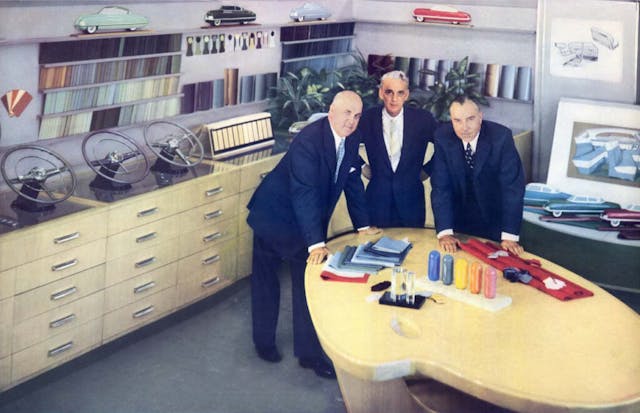
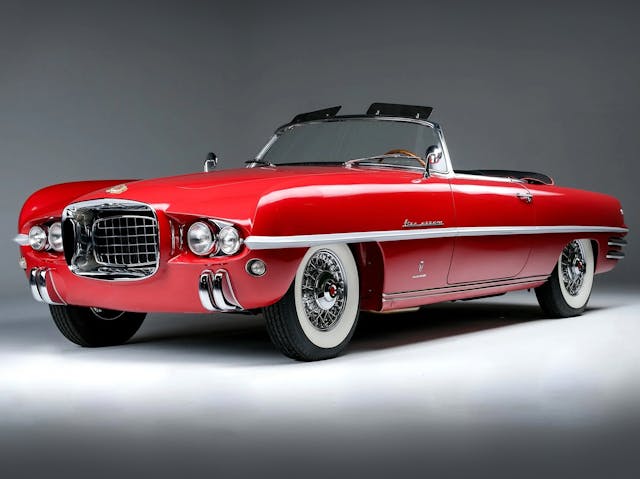
Inspiration came from the racetrack. First, there was Exner’s personal Studebaker Indy car, a racer he’d owned back in the days when he worked for the company in Indiana. Next, there was his appreciation for the Jaguar D-Type, three-time winner of the 24 Hours of Le Mans (1955, ’56, and 57). With straight-six power and a signature asymmetric fin, the D-Type was clearly on Exner’s mind as he drew those first initial sketches in 1958.
The last piece of the puzzle was NASCAR. In 1960 Plymouth entered seven Valiants powered not by thundering V-8s but by 170-cubic-inch inline-sixes in a new compact car NASCAR race, and all seven cars finished ahead of the rest of the field. The success of the slant-six caught Exner’s attention.
Marketplace
Buy and sell classics with confidence
Originally called the Asymmetrica, Exner’s concept would be built on a shortened Valiant chassis, with that 2.8-liter inline-six under its hood. Chrysler’s performance division went to work, adding a four-barrel carburetor with a ram-air intake, upgraded camshaft with higher compression, and tuning for the left-hand side-exit exhausts. Power was rated at just under 250 hp at 7000 rpm, with a redline of 7500 rpm, and a peak torque figure of 200 lb-ft. For comparison, the most powerful Corvette engine, in 1960, was a 283-cubic-inch V-8 that made 315 hp. With Exner at the wheel, the Asymmetrica went 142 mph. Some aerodynamic tweaks, and it managed over 150 mph. With a three-speed manual gearbox!
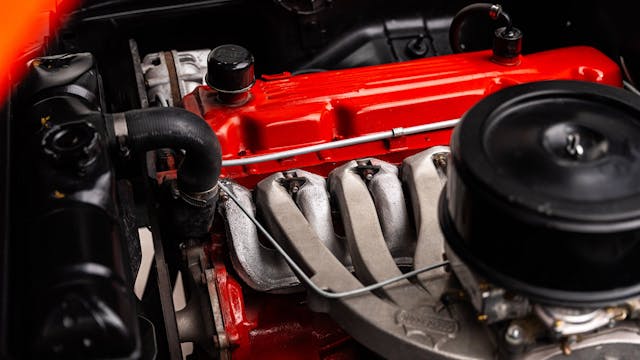
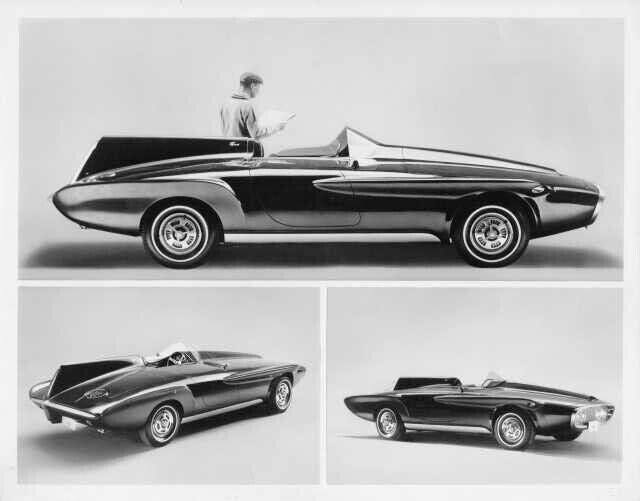
The body was sheet steel, shaped by the craftsmen at Ghia to fit Exner’s drawings. Chrysler later renamed the Asymmetrica the XNR, right around the time the company allowed Ford the rights to the Falcon name. Five years before, Exner had designed the Chrysler Falcon, another they-should-have-built-it stunner.
The completed concept was stunning: Le Mans racer meets The Jetsons. But, like so many of Exner’s forward-looking designs, the XNR would never see series production. Ghia built several examples of a modified, less-radical version, but these also weren’t financially successful. Chrysler sent the XNR back to Italy, as it could not be registered in the United States.
That extradition might have been the end of things, but Ghia turned around and sold the car to an unnamed German national, who then passed it on to noted car collector Mohammed Reza Pahlevi, the Shah of Iran. It was not the only Ghia-built, Exner-designed Mopar owned by the Shah; to this day, you can find the 1956 Chrysler K300 Special sitting in the National Car Museum of Iran in Tehran.
Shah Pahlevi didn’t keep the XNR long, and by 1969, the car was in Kuwait. We know this because anyone reading the May issue of National Geographic magazine would have flipped the page to see a car dealer called Anwar al Mulla driving the XNR around on the street like it was a Dodge Dart or something. Away from the car show circuit, the XNR looked even more outlandishly futuristic.

From here, the concept was sold into Lebanon, right before civil war ignited the country. It was tucked away in an underground garage while the world above it burned.
Nearly one million people left Lebanon during the conflict, especially those who could afford to escape. Many cars were left behind or tucked away in garages. Lebanese-born Karim Ebbe was a teenager when the war began, and he possessed a knack for ferreting out these hidden treasures. By the 1980s, he had teams of scooter-riding scouts to alert him of anything interesting, like a vintage Ferrari under a tarp. One day, those scouts told Ebbe they’d found something really weird.
He recognized the XNR from pictures in a Swiss book, and purchased it on sight. Then followed several nerve-wracking years as the civil war intensified close to its end, forcing him to move the car several times. When peace came, fifteen years later, the XNR badly needed restoration, but it had endured.
Ebbe held on to the car for several more years, until he entrusted Ontario’s well-respected RM Restorations with the task of bringing it back to life. The work required replacing several missing parts, and while there was plenty of documentation to pore through, getting the details right took time. After two full years of restoration, the XNR debuted at the 2011 Amelia Island Concours D’Elegance. Later that same year, it appeared on the lawn at the Pebble Beach concours.
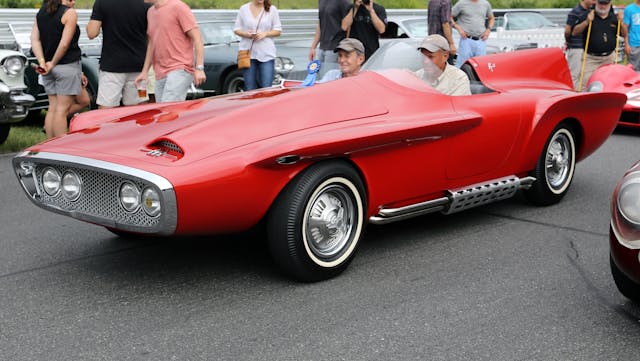
On the 18th green of the famed course, XNR was awarded the Gran Turismo Award, given out each year since 2008 by Polyphony CEO Kazunori Yamauchi as an honorary judge. The prize for the award is digital immortality, as the winner is scanned and put into the Gran Turismo video game as a driveable car. If you have Gran Turismo 6 or 7, the two latest versions, you can buy your own XNR.




Thanks to sometime Hagerty contributor Jamie Kitman, we were able to confirm that the car shown in Fallout is the actual original XNR. (A very faithful reproduction done by Gotham Garage is owned by The Petersen Museum in Los Angeles.) The original is part of the Paul and Linda Gould collection, which also includes historic Alfa-Romeo and Bugatti models.
Exner was forced out at Chrysler in 1962, but the impact of his work still lasts today. As an onscreen embodiment of mid-century hope for the future, the XNR is a perfect piece of car-casting. And there’s something fitting about a show based on a video game featuring a car that’s playable in pretty much the most famous automotive game ever. You have to think Virgil Exner would have liked to see the car he put his name on still around after all these years, still taking part in popular culture, a past idea of an optimistic future.
***
Check out the Hagerty Media homepage so you don’t miss a single story, or better yet, bookmark it. To get our best stories delivered right to your inbox, subscribe to our newsletters.









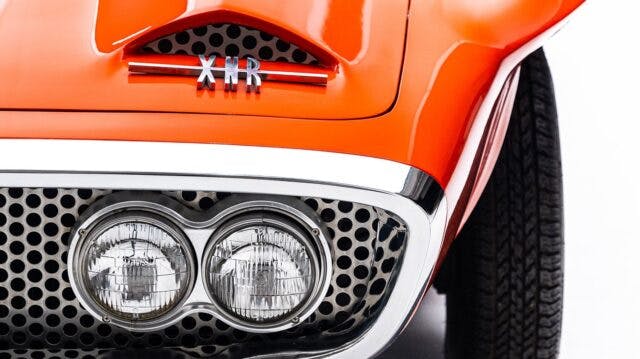

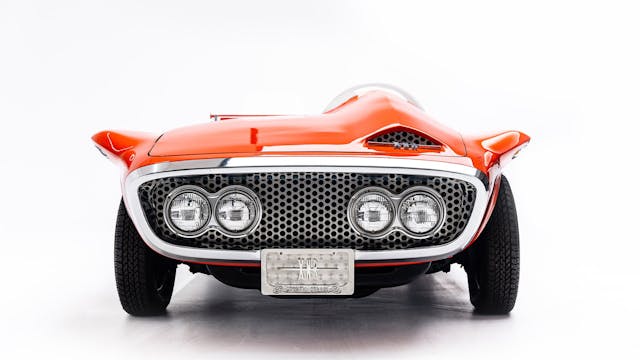
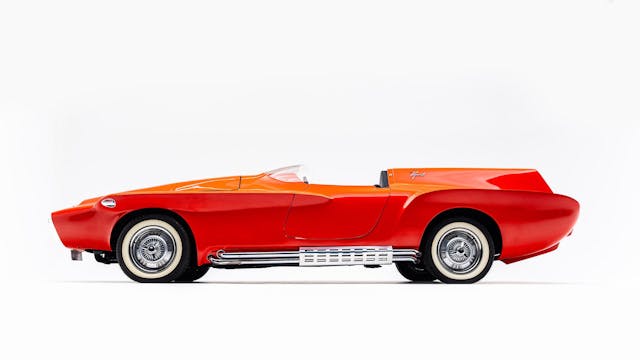







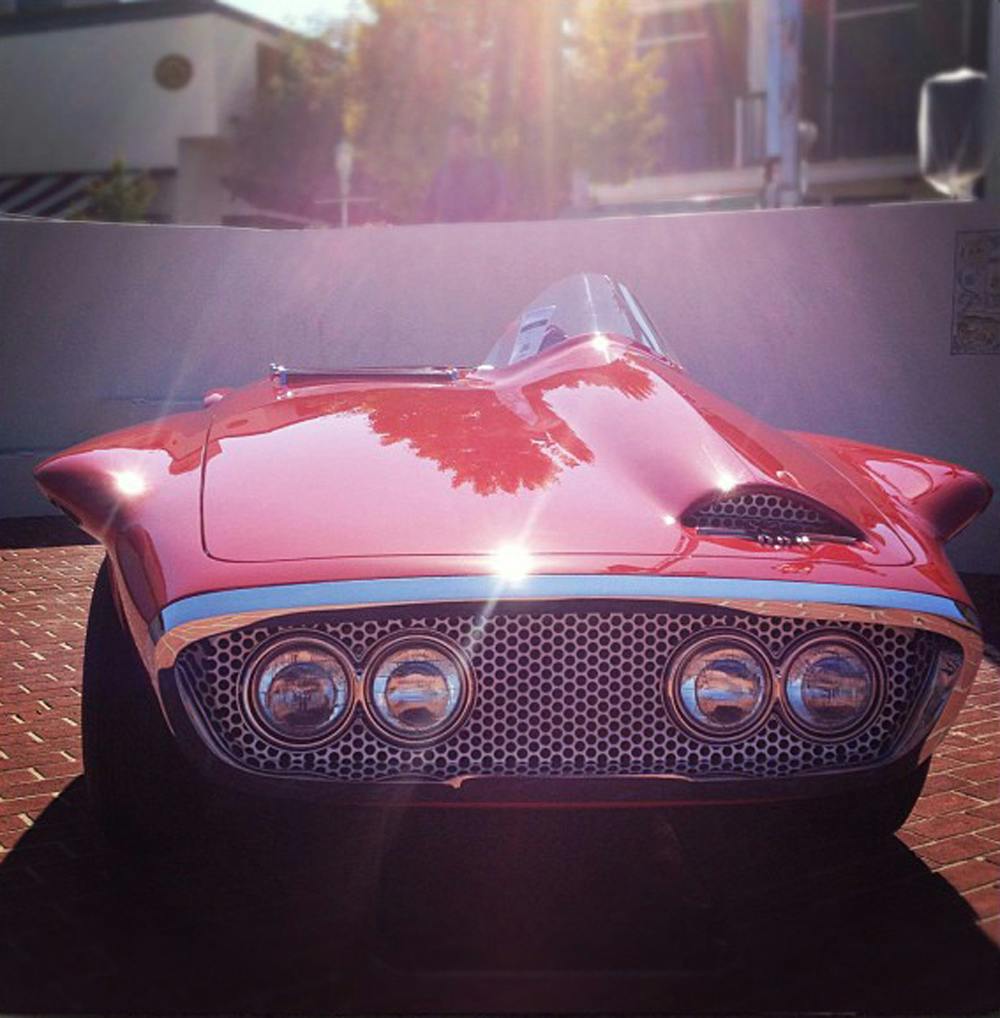







The XNR is definitely a retro-futuristic oddball of a car. The engine looks great, the rest is weird to me.
Ed Roth and George Barris might disagree.
Thanks for this article. I saw the car in Fallout and was wondering what it was. Getting 250 hp from the smaller 170 cid version of the slant six was impressive in those days – with a 7,500 rpm redline no less!
206HP at 6500 RPM on the chassis dyno with a 170 incher in a 63 Valiant sedan back in ’71 was done with no “aftermarket” or “fancy” parts. That little six could really wind out. It was my daily driver during most of my automotive apprenticeship and was very capable of pinning the speedo although it was quite “dead” at lower engine speeds
I hadn’t read the entire article and went to find out if this was the Gotham Garage car. I should have been patient and finished the article. It’s right there. This is the original.
I remember the XNR from an automotive magazine from when I was a kid. I thought it was funny looking then and still do.
Thanks for the great story. The hot slant six parts in the XNR were available as the “Hyper Pak” a dealer installed option for about $400. Including long ram intake with Carter 4bbl carb, low profile air filter, cast iron headers, hot cam and valve springs, 2-1/4″ exhaust, and a bigger clutch. This was the hamologation kit for the NASCAR Valiants, made available to the general public. About 125 Hyper Paks were made.
I have a 61 Valiant with a slant six, built to Hyper Pak specs, with original 4bbl carb, intake, and cast iron headers. The engine makes great power, and never fails to impress. … Gary
Side view–great
Back view–OK
Front view–butt ugly
I just noticed that the slant six in your close-up photo is wearing an Austrailian made Aussiespeed intake manifold, and some oddball exhaust manifolds they are still available new. The real original Hyper Pak parts are much prettier. … Gary
It looks like something Speed Racer would be competing against, meaning it’s beautiful. Too bad the front end is scarred with a license plate mount.
I loved that design when I first saw it in MT, and still do! That was also about the time that I got my CADL, and hit the streets! Of all the nutty Exener designs, this is the purest, and it has a blend of Euro, salt-flats, and hot rod that is very satisfying from all angles. You want Exener ugly: 1960 Dodge, and ’62 as well.
Guys; it was part of an era! You probably think a Nissan Cube is cute, or an X-car classy! Boy I wish I had a model kit of that XNR, at least!
BTW: I combined the front clip from a ’61 Dodge to a ’61 Plymouth body, and came up with a tasteful, sleek car — too bad it’s 1/25 scale! Wick B.A., M.A. Art CA State U 1973
The slant 6’s were legendary and fairly powerful. I learned this the hard way. 1969 I traded my 61 Olds 88 for a 1965 Valiant with 225 slant 6 with factory 4 speed. Wanted more power so installed a 273 V8 2 bbl. Added dual exhaust with Thrush cheery bombs from JC Whitney. It sounded great but after all the expense it was only a little more powerful than the slant 6 lol
I was fortunate to see this in person at Amelia Island several years ago. There is another rarely talked about iteration of this Exner/Ghia styling exercise called The Plymouth Valiant St Regis. All I have ever found are these three photos, less racer, more Gran Touring. Would love to see and know more. https://www.carrozzieri-italiani.com/listing/plymouth-valiant-st-regis/#google_vignette
I find vehicles like the one captured in this article fascinating. Most mainstream cars of this era had virtually no unique body lines. One car looked ‘similar’ to the next brand offering. Cars like this cracked open the doors for what would lead to out-of-the-box desirable innovation. I look at it this way, you have to start somewhere and why not imagine what the future could look like?
l’d like to see more of the “convertible” modified Studebaker Hawk in that film clip!